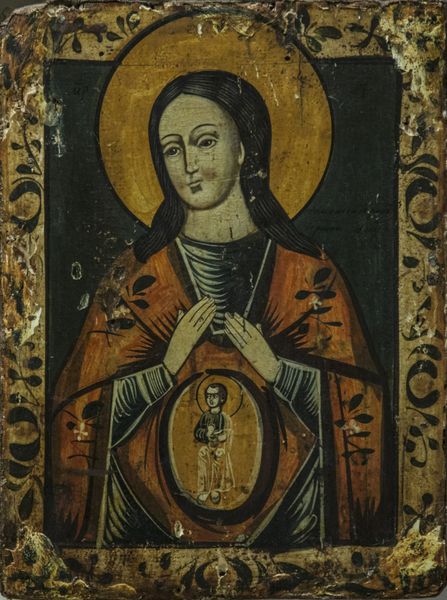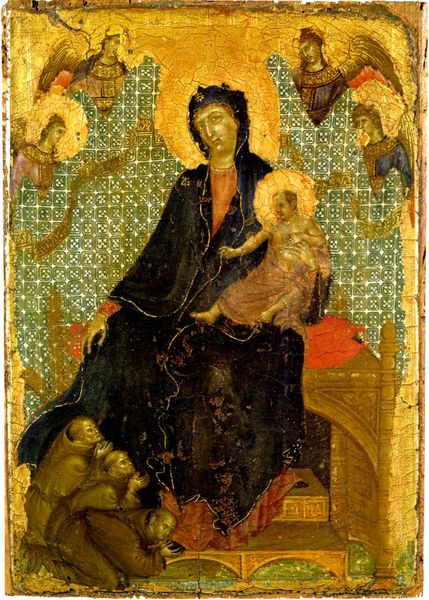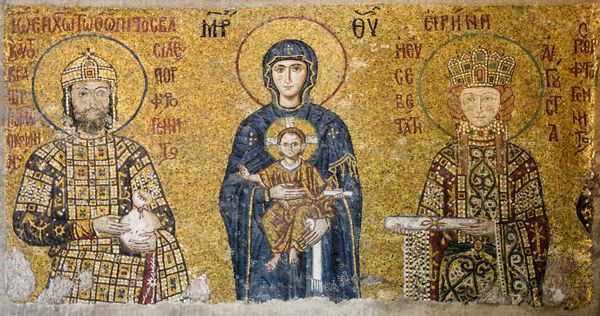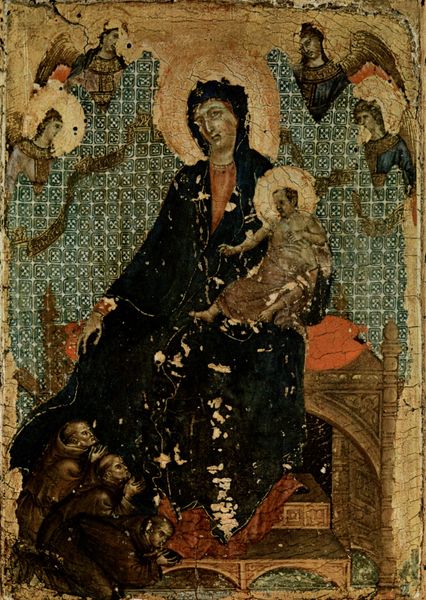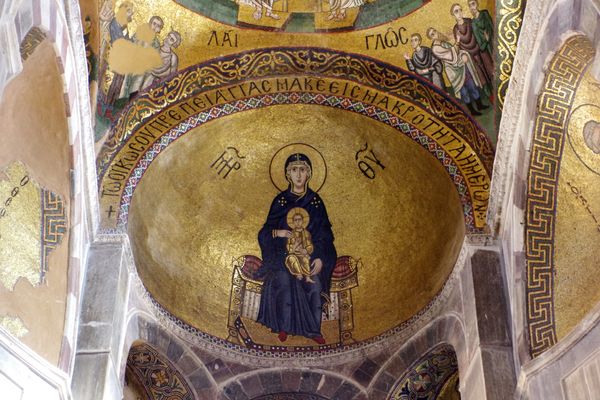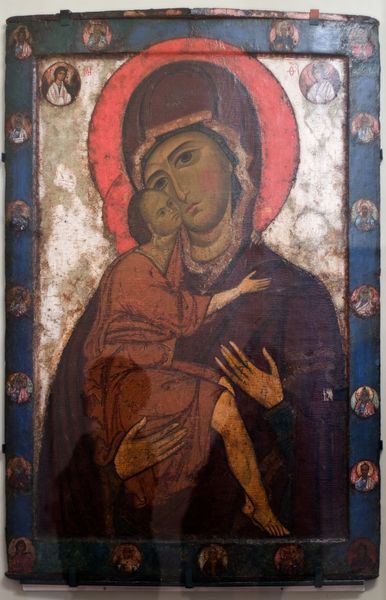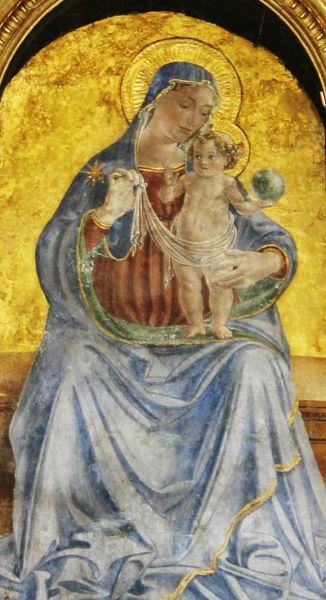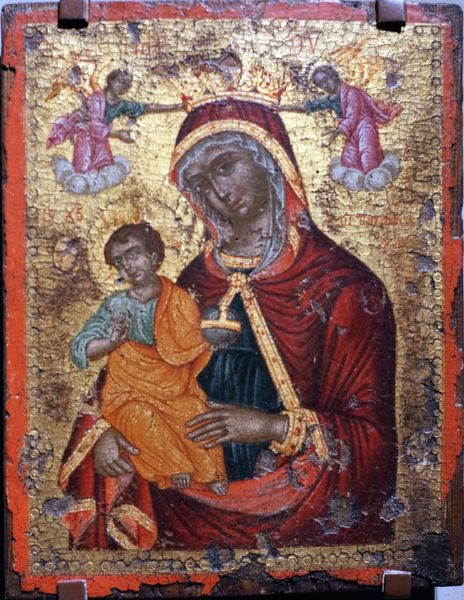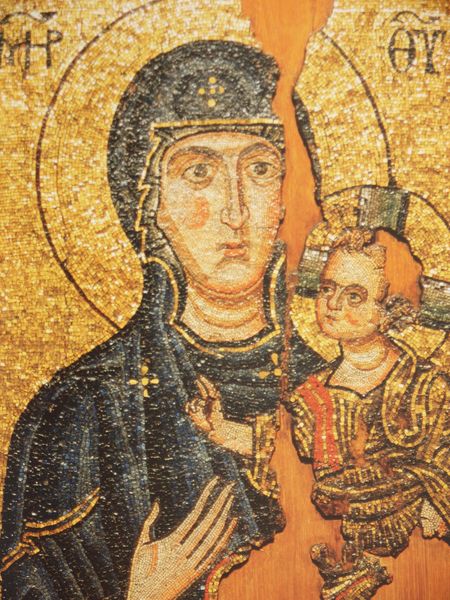
The Virgin and Child (theotokos) Mosaic, in the Apse of Hagia Sophia 867
0:00
0:00
byzantinemosaics
Hagia Sophia, Istanbul, Turkey
mosaic
#
portrait
#
mosaic
#
byzantine-art
#
prophet
#
holy-places
#
figuration
#
child
#
mixed media
Copyright: Public domain
Editor: So, this is the "Virgin and Child" mosaic from Hagia Sophia, dating back to 867. I’m really struck by the gold—it almost makes the figures seem like they’re floating in this ethereal space. What's your take on this work? Curator: Oh, the gold! It's like stepping into a Byzantine dream, isn't it? It transcends reality, pulling us into a realm of faith and splendor. And look closer—notice how the artist used tiny tesserae to construct these monumental figures? Each piece placed with intention. I see a reflection of humanity's yearning for the divine and wonder, can you feel it? Editor: Absolutely, the craftsmanship is incredible! But beyond the technique, what does this image communicate about its time? Curator: Great question! This mosaic appeared after the Iconoclasm, so it signals a renewed embrace of religious imagery. Mary's depiction here, she's not just a mother, she's the Theotokos – the God-bearer, powerful and serene. But what stories do you imagine that each glittering piece of gold has silently been witness to? Editor: I guess I hadn't considered the political implications so much! Seeing it that way gives it even more weight. I’m definitely leaving here with a new appreciation for Byzantine art. Curator: Me too, thinking about the history embedded in those tiny tiles just…fills my soul. The dialogue of the past still speaks to us in colors of wonder, doesn't it?
Comments
No comments
Be the first to comment and join the conversation on the ultimate creative platform.
